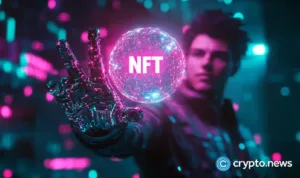Stablecoins represent a fundamental part of the crypto ecosystem, but 65% of scams related to cryptocurrencies now involve these very digital assets.
Stablecoin issuers face threats that go beyond technical vulnerabilities, putting reserves, reputation, and trust at risk. To respond to these challenges, Blockaid offers advanced monitoring and protection solutions, ensuring security and regulatory compliance.
“`html
The challenges for stablecoin issuers
“`
Stablecoin issuers operate in a highly complex environment, characterized by significant risks related to fraud, treasury vulnerabilities, and regulatory compliance. Their widespread use and the speed at which they are traded make them particularly exposed to financial abuse phenomena.
One of the most widespread issues is fraud related to the improper use of assets. The liquidity and instant transferability of stablecoins make them an ideal target for financial criminals.
Scammers use these features to orchestrate fraudulent schemes, making it difficult to recover funds and trace cross-chain transactions. Investment scams, elder fraud, and money laundering schemes are just some of the threats affecting issuers.
Another crucial risk is represented by the vulnerability of the treasury and reserves. The stability of a stablecoin depends on fully guaranteed reserves, but poor security can expose issuers to theft, unauthorized access, and poor asset management. Furthermore, vulnerabilities in smart contracts can be exploited to manipulate the issuance and destruction mechanism of tokens.
On the regulatory front, issuers must maintain strict control to meet increasingly stringent regulations, such as compliance with anti-money laundering obligations and proof of reserve. Failure to meet these requirements can compromise their credibility and investor trust.
Stablecoins operate on multiple protocols and DeFi exchanges, increasing the risk associated with cross-chain complexity. Third-party smart contract exploits and security issues in cross-chain bridges represent significant vulnerabilities that can compromise the entire ecosystem.
How Blockaid protects the stablecoin ecosystem
Blockaid offers an advanced platform to mitigate these risks, providing real-time monitoring of token flow and ecosystem activity. Thanks to its technology, it is possible to check reserves, prevent unauthorized outflows, and monitor DeFi platforms to identify suspicious patterns.
Timely identification of threats is another key element of the protection offered by Blockaid. The platform is capable of identifying malicious addresses, detecting money laundering schemes, and providing intelligence on emerging threats, reducing the risk of cyber attacks.
In addition to prevention, Blockaid provides tools to investigate suspicious activities, ensuring complete traceability of transactions and the collection of evidence usable for regulatory audits. This allows issuers to comply with regulatory requirements and respond effectively to incidents.
The ability for automated response to critical incidents is another strength of Blockaid. The platform can freeze suspicious funds, revoke approvals to prevent harmful interactions, and temporarily suspend the issuance of new tokens in case of an exploit, ensuring immediate protection against threats.
Finally, Blockaid strengthens the security of smart contracts and on-chain infrastructures, constantly monitoring vulnerabilities and protecting validation protocols and cross-chain bridges from potential exploits.
Blockaid: a new security standard for stablecoins
With a stablecoin market exceeding 5.7 trillion dollars, the protection of these digital assets is crucial.
Blockaid helps issuers navigate an increasingly complex environment, providing advanced tools to ensure security, transparency, and regulatory compliance.
Thanks to real-time monitoring, threat detection, and automated incident response, Blockaid is the ideal solution to protect the entire stablecoin ecosystem and ensure user trust.
Read the full article here









